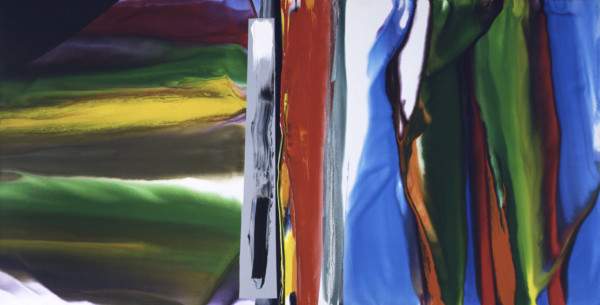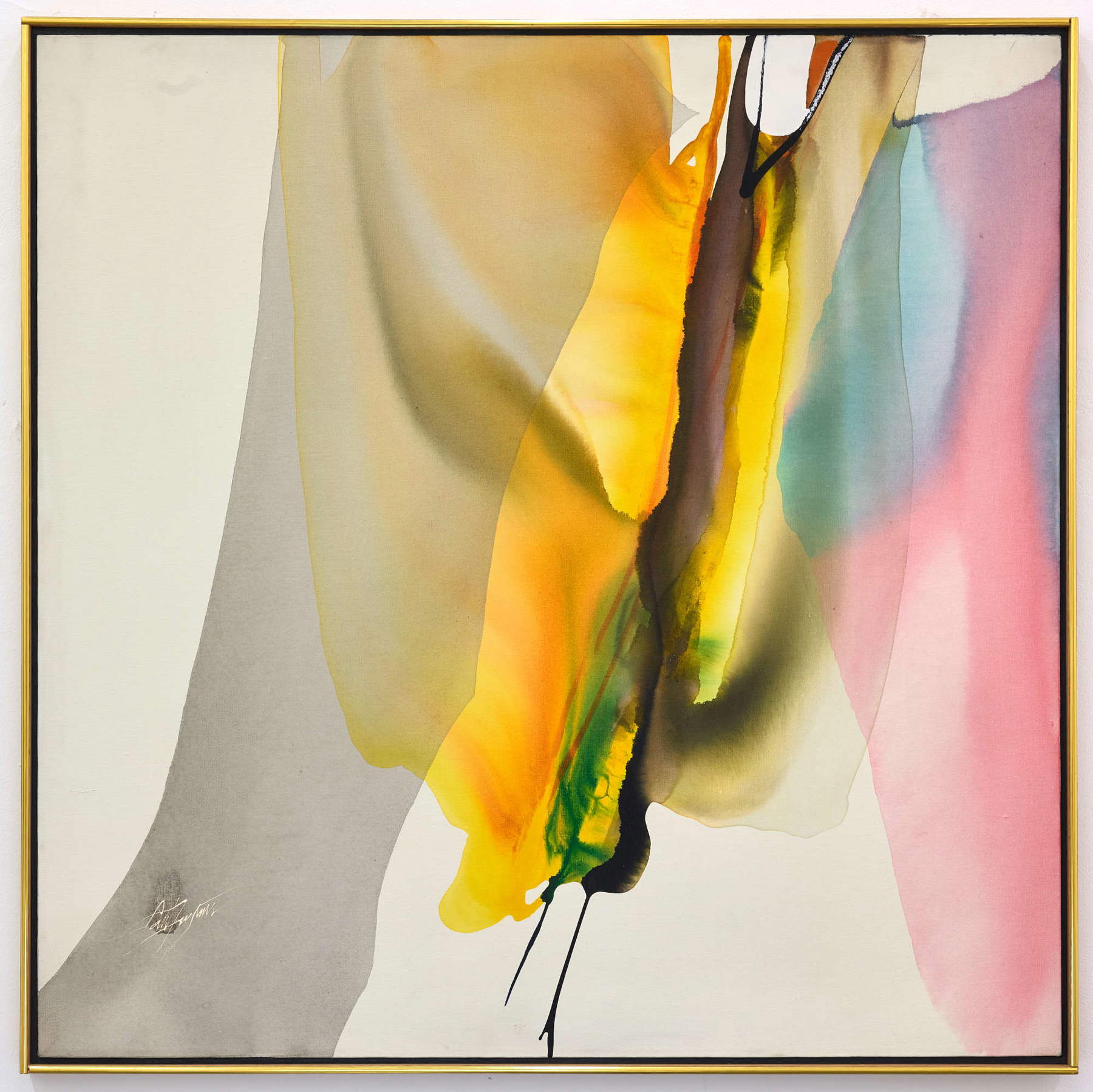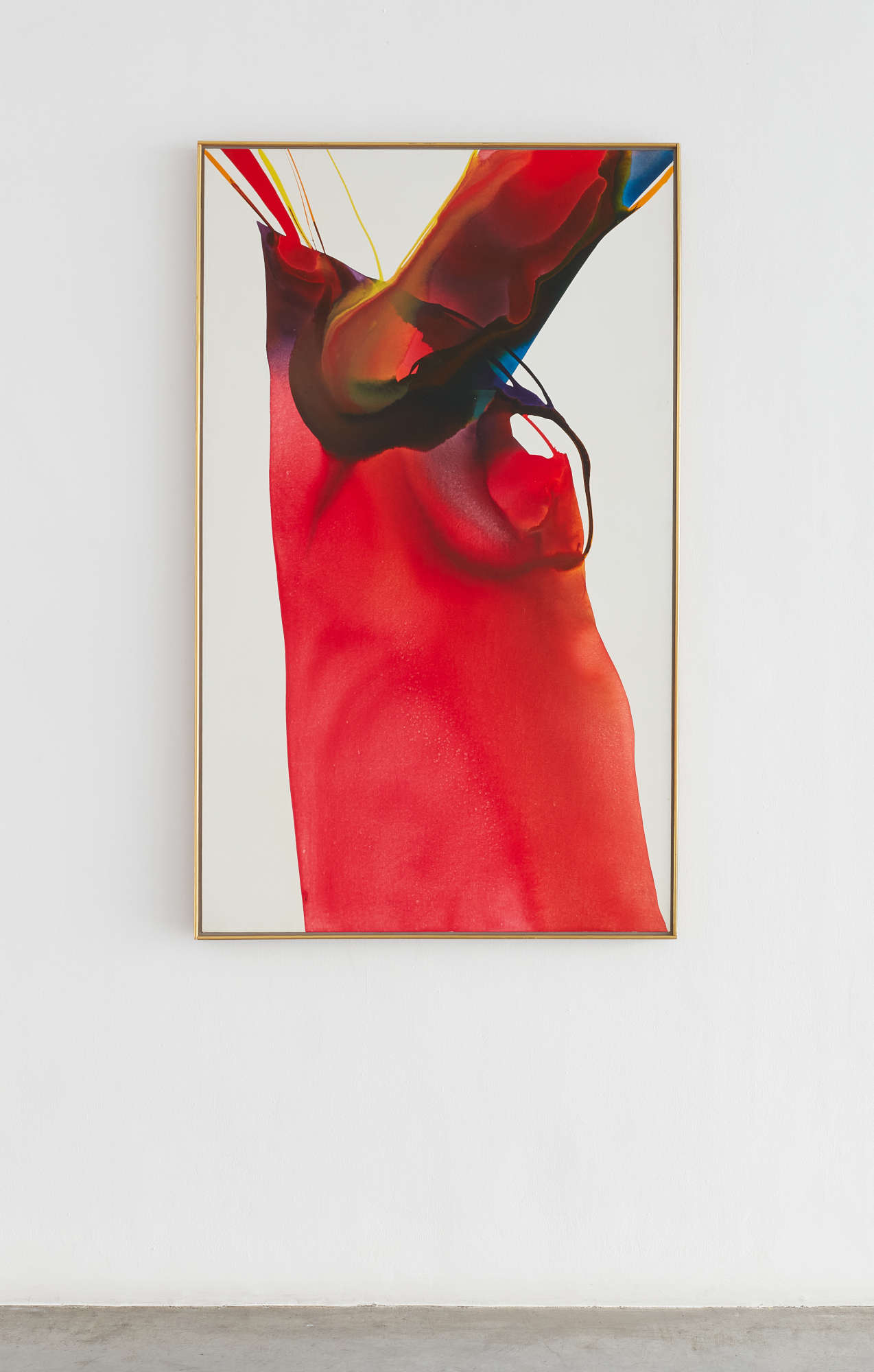One of the greatest abstractionists ever, the American Paul Jenkins (Kansas City, 1923 - New York, 2012) is the protagonist of an exhibition at CIAC - Centro Italiano Arte Contemporanea in Foligno, where from October 29 to January 7, 2024 the exhibition Paul Jenkins. Absolute Painting, curated by Italo Tomassoni, organized on the occasion of the centenary of the artist’s birth in collaboration with London’s Ronchini Gallery.
Known for the luminous color of his abstractions, Paul Jenkins embodies the New York School and is one of the leading representatives of second-generation abstract expressionism . His early studies were at the Kansas City Art Institute. Attracted to New York and with the support of the GI Bill, he later attended the Art Students League and became a student of Yasuo Kuniyoshi and eventually became associated with the Abstract Expressionists, inspired in part by Pollock’s “catastrophic defiance and total metaphysical consumption of art” (so Mark Tobey). Jenkins was a friend and contemporary of many other important artists including: Jean Dubuffet, Mark Rothko, Jackson Pollock, and Willem de Kooning, all of whom inspired his painting. He also traveled throughout Europe, including Sicily, then Spain and later France, which would become his second home throughout his life. In fact, Jenkins’ first solo exhibition was held in Paris in 1954.
His work is now owned by more than 100 institutions including museums and foundations in 10 different countries, and his work continues to be exhibited widely in at major galleries around the world. Ranging from monochromatic works such as Phenomena Cardinal Sign (1972) to canvases of more varied coloration such as Phenomena Listen Listen (1968), the Foligno exhibition focuses on the artist’s paintings made in the decades following his critical transition from oil to acrylic in the 1960s. Working with acrylic allowed Jenkins to fully explore the greater translucency along with opacity that is possible in this medium. In fact, the process of creation and the materials figure prominently in the artist’s works, as he devoted himself to refining the technique of pouring colors onto canvas, methodically choreographing it to create abstractions that are as incredibly fluid in form as they are dramatic in color contrast.
Influenced by Goethe’s color theories, Jenkins began in 1960 to title his paintings Phenomena followed by a key phrase or word. In this fundamental shift to acrylic, the ivory knife-given to the artist in 1958-soon became an essential tool for guiding the flow of poured paint in his works.

 Paul Jenkins,
Paul Jenkins,
This exhibition aims to make the public aware of Jenkins’ continuing experimentation with color, light, form and expression, to which the artist devoted himself fully physically and spiritually throughout his career. From the dark, intense canvases of the late 1950s full of mystery and contrast, to the bold, tactile canvases of the 1990s with their thick, impasto-like strokes, to the more ephemeral compositions of the 2000s. The horizontal layers of color in Phenomena Ancestral Striations (1995) seem to pulsate under pressure. With similar dynamism, Phenomena Invocation at the Anvil (1998) is equally powerful with clearly defined forms painted with thick impasto that seem to explode with incendiary heat and flame from the veils of color below. In contrast, Phenomena Initiation (2007) is composed of vertical veils of brilliant tones, both transparent and opaque, that overlap and merge to fill the entire canvas with vibrant colors. Observing even sol o these three paintings clearly captures Jenkins’ continuing exploration of new ways of handling colors on canvas, creating overwhelming compositions that unite matter and spirituality. As Italo Tomassoni writes at the conclusion of his introductory essay to the exhibition, “Jenkins cultivates art within the thickness of a surface that is mysterious because it is manifest, impenetrable because it is totally revealed. Finally: a depth immersed in the insolence of a beauty illuminated by a light that comes from far away.”
The exhibition can be visited Thursday through Sunday from 10:30 a.m. to 1 p.m. and 3:30 p.m. to 7 p.m. Ticket: Full € 7.00; Reduced A € 5.00 (groups with more than 15 units, FAI Member and Italian Touring Club Member agreements); Reduced B € 3.00 (children from 7 to 18 years); Free for children under 6, tour guides, journalists, handicapped persons and their companions. Ticket includes a visit to the permanent collection at the CIAC of the Fondazione Cassa di Risparmio di Foligno and the ’Ex Chiesa della Santissima Trinità, permanent exhibition space of the work “Calamita Cosmica” by Gino De Dominicis. For info: www.ciacfoligno.it
 |
| An exhibition in Foligno on Paul Jenkins, one of history's greatest abstractionists |
Warning: the translation into English of the original Italian article was created using automatic tools. We undertake to review all articles, but we do not guarantee the total absence of inaccuracies in the translation due to the program. You can find the original by clicking on the ITA button. If you find any mistake,please contact us.